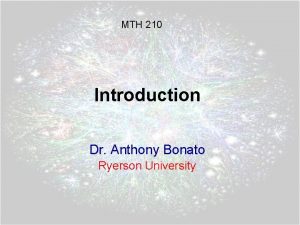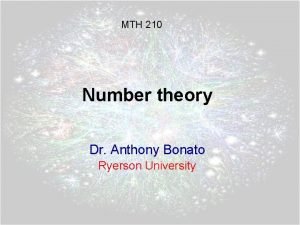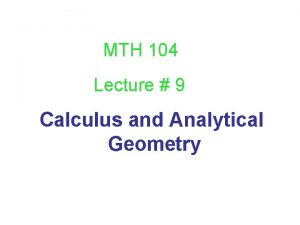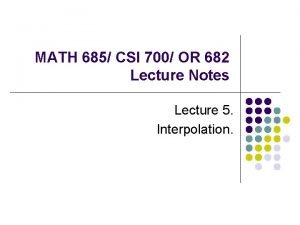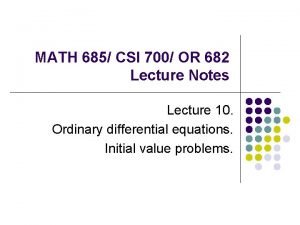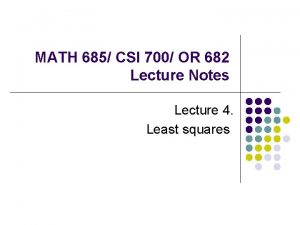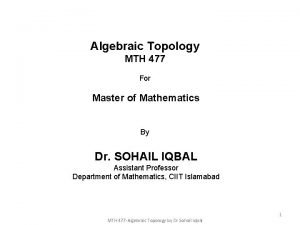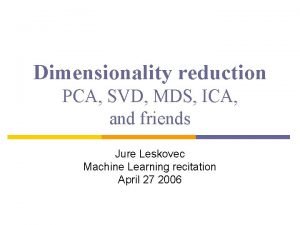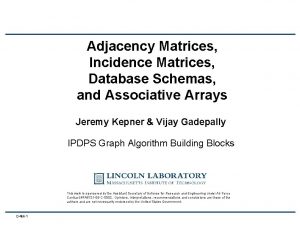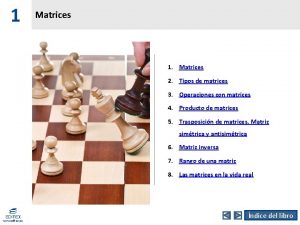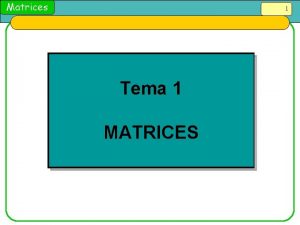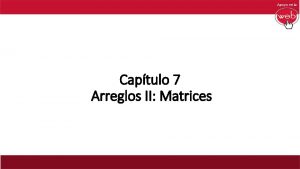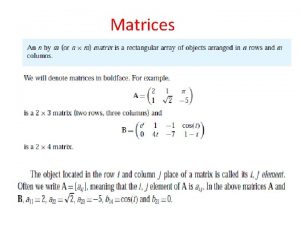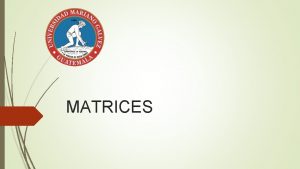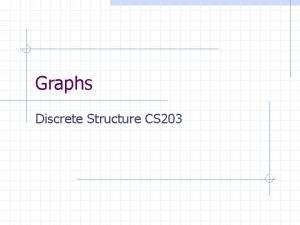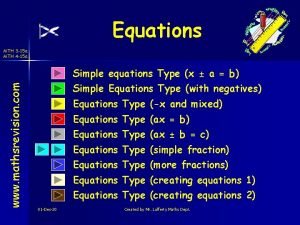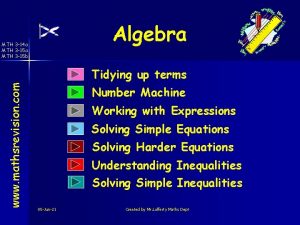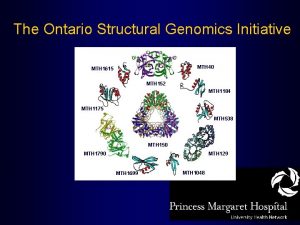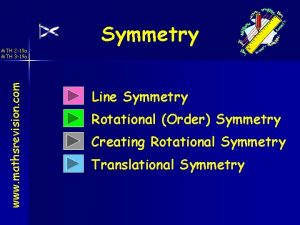MTH 210 Adjacency Matrices and Page Rank Dr























- Slides: 23

MTH 210 Adjacency Matrices and Page. Rank Dr. Anthony Bonato Ryerson University

Adjacency matrix • given a simple graph of order n, with vertices 1, 2, 3, …, n-1, n, then: – place a 1 in the (i, j) entry if ij is an edge – place a 0 in the (i, j) entry if ij is a non-edge

Examples

Things to notice about the adjacency matrix • it is symmetric: interchange rows and columns (ie transpose) remains the same • it is binary: every entry is 0 or 1 • diagonal (i, i) entries are all 0: no loops

Multi-graphs and loops • replace “ 1” by the number of parallel edges between i and j • note: not necessarily a binary matrix • loops add +1 on diagonal

Directed graphs • no longer symmetric

Key facts If G is a graph: • row or column sums are degrees. If G is a digraph: • Row sum is out-degree. • Column sum is in-degree.

Page. Rank • Used by Google to rank pages • Idea: – When surfing the web, you typically follow links – You get bored occasionally and go to a random page

Page. Rank • Page. Rank is the probability a random web surfer lands on your page • the higher the Page. Rank the more “popular” the web page

Page. Rank matrix • G connected graph of order n • C a real number in (0, 1) • If ij is an edge, (i, j) entry is: C/deg(i) + (1 -C)/n • If ij is not an edge, then the (i, j) entry is (1 -C)/n

Notes on Page. Rank matrix • derived from an n x n matrix • the constant C is given beforehand • entries depend on C and n, but also on deg(i) • entries in matrix are rational numbers (not necessarily integers)

Exercises

MTH 210 Isomorphisms Dr. Anthony Bonato Ryerson University

• we’ll make precise: “these graphs are the same” • If they are the same, they should share all the same properties/invariants. • same will be “isomorphic”

• Informal ideas: – if graphs are isomorphic, you can redraw one to look like the other – if graphs are non-isomorphic, then there is some property holding in one but not the other

isomorphic graphs

non-isomorphic graphs

One-to-one functions • a function f: X → Y is one-to-one if distinct elements of X map to distinct elements of Y • that is: – For all u, v in X, if u ≠ v, then f(u) ≠ f(v) • Idea: one-to-one functions “separate points” in X

Examples

Isomorphisms • let G and H be graphs, and let f: V(G)→V(H) be a function • f is an isomorphism if: 1. G and H have the same order 2. f is one-to-one and for all vertices u and v in G: • uv is an edge in G if and only if f(u)f(v) is an edge in H

Note • my definition is a little different looking (but the equivalent!) to the book’s • in real “graph theory, ” you don’t define two mappings like the book does for an isomorphism. . .

Key fact • if G and H have different orders or sizes, they are not isomorphic • Check their subgraphs, kinds and number of cycles, number of leaves, degrees of vertices … to see if they are the same • can you redraw G to look like H?

Exercises
 M-adjacency digital image processing
M-adjacency digital image processing 210 210 210
210 210 210 Mth 210
Mth 210 Mth 210
Mth 210 Explain basic relationship between pixels
Explain basic relationship between pixels G+ve
G+ve Mth104
Mth104 Mth 685
Mth 685 Mth 685
Mth 685 Mth 685
Mth 685 Mth 105
Mth 105 Mth
Mth Google page rank algorithm
Google page rank algorithm Page rank
Page rank Rankmap
Rankmap Page rank centrality
Page rank centrality Google page rank algorithm
Google page rank algorithm Google page rank algorithm
Google page rank algorithm Page rank nedir
Page rank nedir Page rank analysis
Page rank analysis Checkpagerank.net
Checkpagerank.net Webmatrix ranking
Webmatrix ranking Page rank
Page rank What should be on a title page
What should be on a title page


